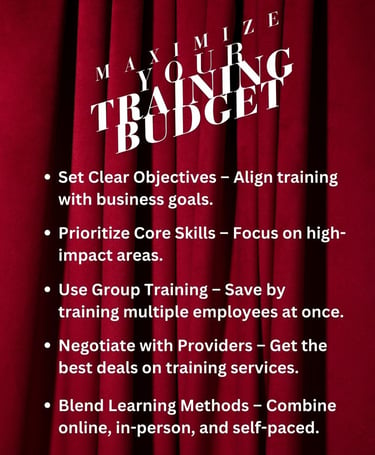How Can I Manage and Maximize Our Training Budget?
Training and development are essential components of personal and professional growth, whether you’re managing a team or focusing on individual skills. However, managing a training budget effectively can often be a challenge, especially with the variety of learning options available. A well-planned training budget ensures that your team or you as an individual receive the development needed while staying within financial limits.
One increasingly popular and cost-effective approach to managing training expenses is allocating a portion of the budget to online training programs. Let’s explore why this is a great option and provide a broader look at how to optimize your training budget.
Why Allot Budget for Online Training Programs
When it comes to training, costs can quickly escalate, especially with in-person seminars, conferences, and one-on-one training sessions. For businesses or individuals, online training programs offer a highly cost-effective alternative while still delivering quality education. Here are a few reasons why online training deserves a significant portion of your training budget:
Lower Costs Compared to Traditional Training:
Online courses are generally more affordable than in-person training due to lower overhead costs. There are no travel, accommodation, or venue fees associated with online learning. Furthermore, many online training platforms offer subscription models or bulk course discounts, providing more opportunities to access diverse courses at a fraction of the cost.Flexibility and Accessibility:
Online training programs are available at any time, making them ideal for busy schedules. Employees or individuals can take courses at their own pace, ensuring that training doesn’t interfere with regular work commitments. This flexibility also allows learners to revisit materials or complete courses during slower business periods.Variety of Courses and Specializations:
Online learning platforms provide a vast array of courses that cover various topics, from leadership and management to software development and marketing. Many programs offer certifications upon completion, adding value to the learner’s skillset and enhancing their professional profile.Scalability for Teams:
For businesses, online training allows for easier scalability. You can train multiple employees at once with the same resources, cutting down the need for multiple trainers or specialized sessions. Some platforms even offer team-based plans to manage learning for larger groups effectively.Focus on Long-Term Value:
With online courses, the value of the training can often extend well beyond the immediate application. By allotting a part of your training budget to online learning, you are investing in long-term growth by allowing employees to continuously update their skills, stay competitive, and adapt to industry changes without constantly exceeding the training budget.








